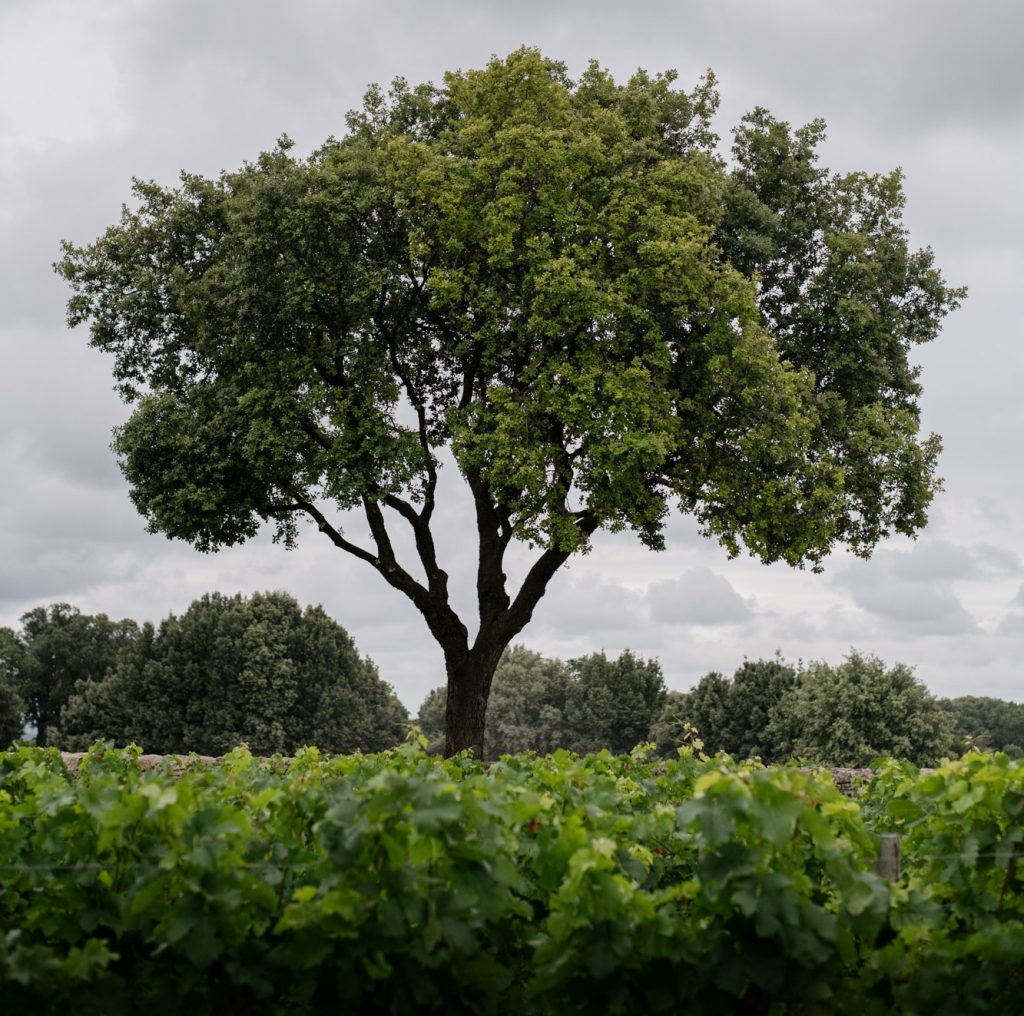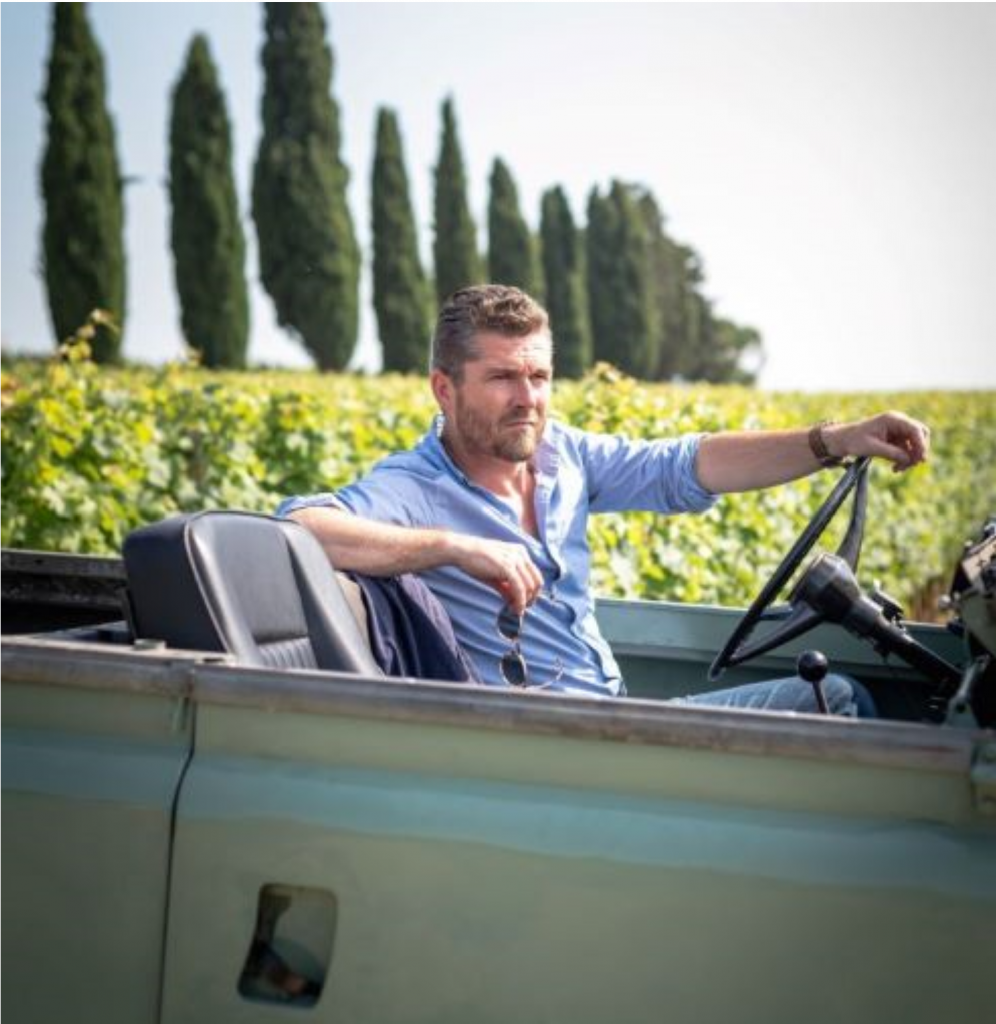Focus on Ch. Berliquet: Bordeaux 2020
Author: Emily Miles

It’s early March, and winemaker Nicolas Audebert – like the rest of our locked-down world – is working from home. He’s relaxed, squinting into the spring sunshine outside his house just south of Bordeaux. It’s the calm before the En Primeur storm.
Nicolas, who was born in Toulon, found his way back to France in 2014 after almost a decade in Argentina. While in South America, he oversaw the Cheval des Andes project – a remarkable collaboration between top-flight St Emilion property Ch. Cheval Blanc and Terrazas de los Andes. “After 10 years on the project, I wanted to find a new challenge,” says Nicolas. “And I wanted to offer my children the chance to grow up in France.”

A fortuitous encounter
“I was lucky enough to cross paths with the owners of Chanel; they offered me the chance to take care of their properties in Bordeaux,” Nicolas explains. The properties to which he refers are classified growths Ch. Rauzan-Ségla in Margaux and St Emilion leading light Ch. Canon. His role at the helm of these grand estates has been to gently tease out the potential of each – perhaps adding some of the polish that he had managed to bring to Cheval des Andes.
A couple of years after his arrival in Bordeaux, a unique opportunity presented itself: the De Lesquen family, who owned Ch. Berliquet, began to talk about selling.
Ch. Berliquet comprises a square, 10-hectare handkerchief of St Emilion vineyard, surrounded on three sides by Ch. Canon’s vines. Its long history dates back to the 1740s, making it one of the appellation’s oldest vineyards. Two centuries ago, Berliquet was highly prestigious, producing some of the region’s most prized wines, but over time its fortunes waned. As recently as the 1970s, Berliquet’s fruit was – unbelievably – being sold to the local co-operative (“it seems impossible to imagine,” says Nicolas). Remarkably, the vineyard holdings were kept intact – with the exception of a small plot which was sold in 1763. Its purchaser? One Jacques Kanon, the frigate lieutenant who founded Canon. He absorbed the Berliquet land into Ch. Canon.
Berliquet’s unique character
When Ch. Canon’s current owners, Chanel, decided to purchase Berliquet in 2017 it seemed that history would repeat itself, and that the vineyard would become part of Ch. Canon’s stable. “At the beginning, we really considered that Berliquet would be a small Canon,” says Nicolas. “Berliquet is surrounded by Canon vineyards; it’s so close by. It seemed like 10 good hectares to put into Canon. Everybody thought when we bought the property that Berliquet would just disappear.
“But, little by little as we started to walk the vineyard, we started to taste, we started to enjoy the terroir, and Berliquet’s character, we began to see that this is not the same as Canon. It’s something different – not opposite, but slightly different. It was similar in terms of elegance, and precision, but it has its own personality. There is more clay, for example, so some of the Merlot is deeper, perhaps more rough in structure.
“Gradually, we will work on that. We’ll replant a third of the vineyard with more Cabernet Franc than Merlot,” explains Nicolas. “We really consider that the terroir can bring Cabernet Franc to the highest expression of fruit, elegance and precision. We’ll probably do some experiments with Malbec too. It’s not just my Argentinean experience, but Malbec has always been part of the classification of St Emilion, and we consider that on the clay, sandy soil at the bottom part of the vineyard, Malbec can bring something very interesting in terms of intensity of fruit and density.”
A succession of small details
Early on, Nicolas brought in mapping and terroir specialists Géocarta and Kees Van Leeuwen to create a soil survey of the vineyard; with this (literally) deep knowledge of the clay-limestone plateau, sloping away to clay and sand, Nicolas has formulated phased plans to variously grub up, replant and co-plant areas of the vineyard. “The idea – over the next five, eight, 10 years – is to become more precise in terms of viticulture,” he explains.
Crucially, Nicolas is not trying to change things overnight; there is, he explains, no rush. Working with the backing of Chanel – financially, and philosophically – means that it is not just money that is being invested at Berliquet, but time. It is too reductive, he explains, to think about Chanel just as a financial backer. “Chanel has a long-term view; this is a long-term investment that’s about quality, about bringing Berliquet back to the highest level and taking the time to do it. They don’t want to just be the owner: they want to protect the savoir faire, protect our craftsmanship, and that is very special.”
In practical terms, this means restoration rather than development – of the incredible and historic limestone cellars, of the château itself (“nothing eccentric, or showing off, just putting everything back in the right place – so that we have a nice place for vinification”). And, of course, the vineyards. “Little by little, we start to try to understand the terroir and take the right direction. This is not something you do in a couple of seconds; it’s not just fine tuning. It’s deep in terms of the viticulture; gradually, we will work on all of those things to find the right personality to express Berliquet and its terroir.
“There are no big changes. There are no big plans. It is, rather, a succession of small details.”
A succession of small details which will, no doubt, propel Berliquet to the echelons of St Emilion’s most-desirable properties. “Personally, I’m sure the wine will fly in the future,” Nicolas says. “The terroir is fantastic, the complexity it can reach is incredible and it’s extremely elegant. It’s a nice combination.”
A year to remember
The last word must go to the immediate future: the release of 2020. “It was a tough year,” Nicolas says, ruefully. “It was difficult from a Covid point of view, from an economic point of view, human, climate, everything. We had a very bad spring with lots of rain and humidity. We had a huge pressure of mildew. After, we had very hot and dry summer, resulting in the low production: it was tough from A to Z. But that’s one way to see it.
“The other way is we have fantastic wine. And we were able to manage viticulture and winemaking. And this is something fantastic about viticulture: year after year, the same things follow – agriculture is something was always there and will always be there through climate change and pandemic and whatever.
“We have lower yields, but it’s fantastic in terms of density, precision. It was ripe, but not too much. So we have great intensity of the fruit, but it has kept the freshness. The limestone is doing its job. It’s this type of vintage where there’s a special taste of victory. I used to play rugby: when you go on the field and you win by 52 to three – something like that – yeah, it’s a victory but it was easy. When you just win by one point or two and you fight for every minute: that’s the real taste of victory. So 2020 is a year we’ll remember: the year that the team stayed very close, and everybody helped each other to be sure that we will be able to produce the wine we want to produce. It was very difficult year, but the result is fantastic.”
You’ll find our full coverage of Bordeaux 2020 En Primeur here.


